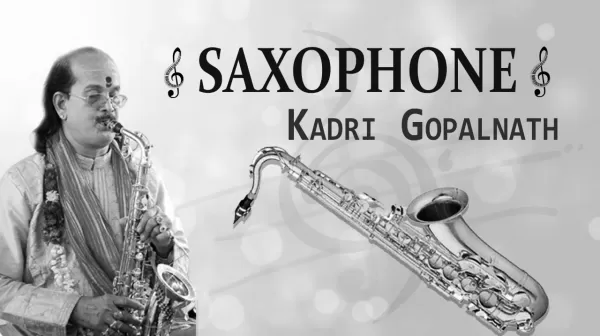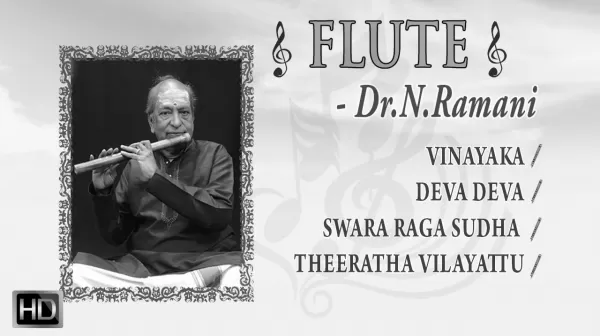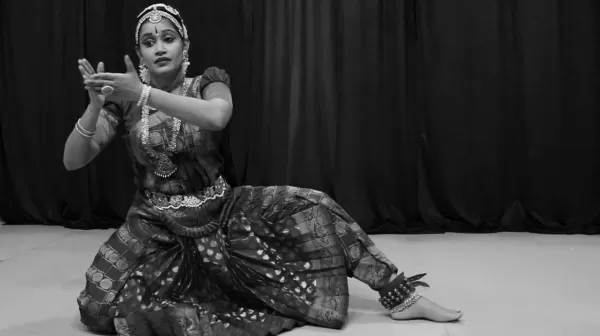राग
Kunnakudi Vaidyanathan & Valayapati Subramaniam ❤️ Violin &Thavil ❤️ Classical Instruments ❤️Nenarunchi
Violin, also known as a fiddle, is a string instrument, usually with four strings tuned in perfect fifths. It is the smallest, highest-pitched member of the violin family of string instruments, which also includes the viola, and the cello. The modern word is derived from the Italian word violino, literally meaning 'small viola'. Thavil or Tavil is a barrel shaped drum from Tamil Nadu. It is used in temple, folk and Carnatic music, often accompanying the nadaswaram. The thavil and the nadaswaram are essential components of traditional festivals and ceremonies in South India.
Nadaswaram & Thavil ❤️ Classical Instrumental ❤️ Thavil Solo ❤️ T.A.Kaliyamurthy, V.G.Balasubramaniam
Nadaswaram, nagaswaram, nadhaswaram or nathaswaram, is a double reed wind instrument. It is a traditional classical instrument originated in Tamil Nadu and also used in Andhra Pradesh, Karnataka, and Kerala (India). This instrument is the world's loudest non-brass acoustic instrument. It is a wind instrument similar to the North Indian shehnai but much longer, with a hardwood body and a large flaring bell made of wood or metal. Thavil or Tavil is a barrel shaped drum from Tamil Nadu. It is used in temple, folk and Carnatic music, often accompanying the nadaswaram.
E. Gayathri ❤️ Veena Music ❤️ Classical Instrumental ❤️ Jukebox
Listen to Sound Of Veena E.Gayathri - Classical Instrumental Music - Veena Instrumental Music Pahi Pahi - 00:03 Eti Yochanalu - 03:58 Kaya Roshanesham - 07:42 Kamakshi - 13:38 Amba Mahavani - 20:14 Watanala - 25:26 Kapali - 30:30 Radha Mukhakamalam - 35:49 Kaveri Thatavasi - 39:52 Sri Chakraraja - 42:52 Thillana - 49:38 Maithrim Bhajata - 54:38 Bhagyada Lakshmi - 57:20 Veena is a plucked stringed instrument originating in ancient India, used mainly in Carnatic classical music and Hindustani classical music.
Fusion ❤️ Blend Of Sitar & Saxophone ❤️ Shankara Shiva Sankara ❤️ B.Sivaramakrishna Rao,V.Janardhan
Sitar is a plucked stringed instrument used mainly in Hindustani music and Indian classical music. The instrument is believed to have been derived from the veena, an ancient Indian instrument, which was modified by a Mughal court musician to conform with the tastes of his Mughal patrons and named after a Persian instrument called the Setar (meaning three strings). In appearance, the Sitar is similar to the Tanpura, except it has frets. The body of Sitar is more or less a spherical gourd at the lower end. Saxophone (also referred to as the sax) is a family of woodwind instruments.
Kunnakudi Vaidyanathan & Valayapati Subramaniam ❤️ Violin & Thavil ❤️ Classical Instrumental
Violin, also known as a fiddle, is a string instrument, usually with four strings tuned in perfect fifths. It is the smallest, highest-pitched member of the violin family of string instruments, which also includes the viola, and the cello. The modern word is derived from the Italian word violino, literally meaning 'small viola'. Thavil or Tavil is a barrel shaped drum from Tamil Nadu. It is used in temple, folk and Carnatic music, often accompanying the nadaswaram. The thavil and the nadaswaram are essential components of traditional festivals and ceremonies in South India.
MPN Sethuraman & Ponnuswamy ❤️ Nadaswaram & Thavil ❤️ Classical Instrumental ❤️ Ka Va Va ❤️ Varali
Nadaswaram, nagaswaram, nadhaswaram or nathaswaram, is a double reed wind instrument. It is a traditional classical instrument originated in Tamil Nadu and also used in Andhra Pradesh, Karnataka, and Kerala (India). This instrument is the world's loudest non-brass acoustic instrument. It is a wind instrument similar to the North Indian shehnai but much longer, with a hardwood body and a large flaring bell made of wood or metal. Thavil or Tavil is a barrel shaped drum from Tamil Nadu. It is used in temple, folk and Carnatic music, often accompanying the nadaswaram.
E. Gayathri ❤️ Veena Tharangini ❤️ Classical Instrumental Music ❤️ Jukebox
Listen to Veena Tharangini - Classical Instrumental Music - E.Gayathri Anandamen Solluven – 00:03 Eppadi Padinaro – 03:50 Katrinilevarum – 09:22 Manida Janmam – 15:37 Unnaiyallai Oru – 19:54 Kanakanondru – 24:58 Sadananda – 30:10 Asai Mugam – 35:34 Adum Chidambaram – 42:46 Dhyaname Enadhu – 48:31 Adal Kaneero – 53:34 Veena is a plucked stringed instrument originating in ancient India, used mainly in Carnatic classical music and Hindustani classical music.
Fusion ❤️ Blend Of Sitar & Saxophone ❤️ Sunadham Madhyamavathi ❤️ B.Sivaramakrishna Rao,V.Janardhan
Sitar is a plucked stringed instrument used mainly in Hindustani music and Indian classical music. The instrument is believed to have been derived from the veena, an ancient Indian instrument, which was modified by a Mughal court musician to conform with the tastes of his Mughal patrons and named after a Persian instrument called the Setar (meaning three strings). In appearance, the Sitar is similar to the Tanpura, except it has frets. The body of Sitar is more or less a spherical gourd at the lower end. Saxophone (also referred to as the sax) is a family of woodwind instruments.
MPN Sethuraman & Ponnuswamy ❤️ Classical Instrumental ❤️ Nadaswaram Thavil ❤️ Thirupugazh
Nadaswaram, nagaswaram, nadhaswaram or nathaswaram, is a double reed wind instrument. It is a traditional classical instrument originated in Tamil Nadu and also used in Andhra Pradesh, Karnataka, and Kerala (India). This instrument is the world's loudest non-brass acoustic instrument. It is a wind instrument similar to the North Indian shehnai but much longer, with a hardwood body and a large flaring bell made of wood or metal. Thavil or Tavil is a barrel shaped drum from Tamil Nadu. It is used in temple, folk and Carnatic music, often accompanying the nadaswaram.
Mridangam ❤️ Classical Instrumental ❤️ Laya Tharangam ❤️ Adi Thalam ❤️ Thiruvarur Bakthavathsalam
Mridangam is a percussion instrument from India of ancient origin. It is the primary rhythmic accompaniment in a Carnatic music ensemble. The mridangam is also played in Carnatic concerts in countries outside of India, including Sri Lanka, Singapore, Malaysia, Australia, United Kingdom, Canada, and the United States. During a percussion ensemble, the mridangam is often accompanied by the ghatam, kanjira, and the morsing. The mridangam is nicknamed as the "King of Percussion".










